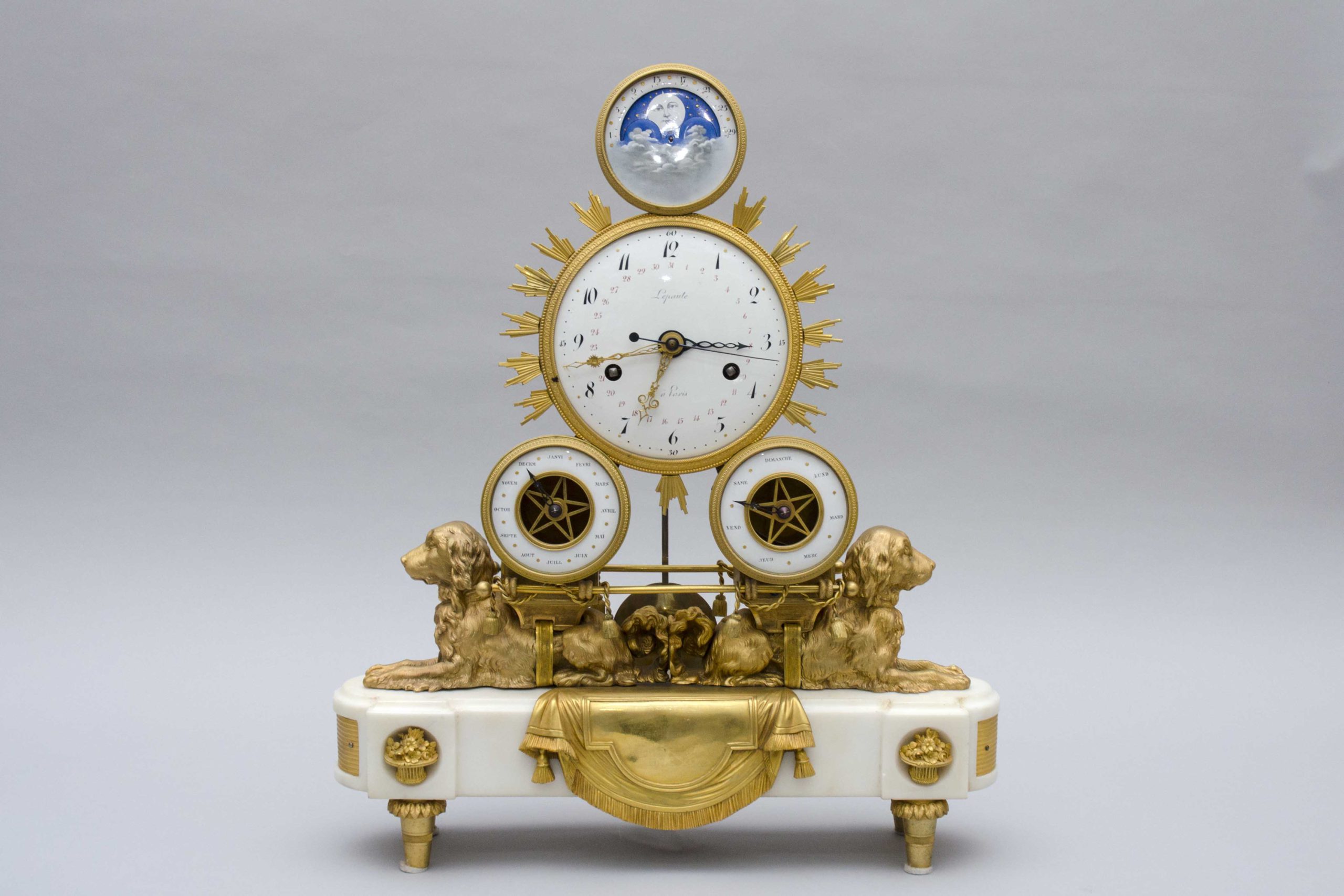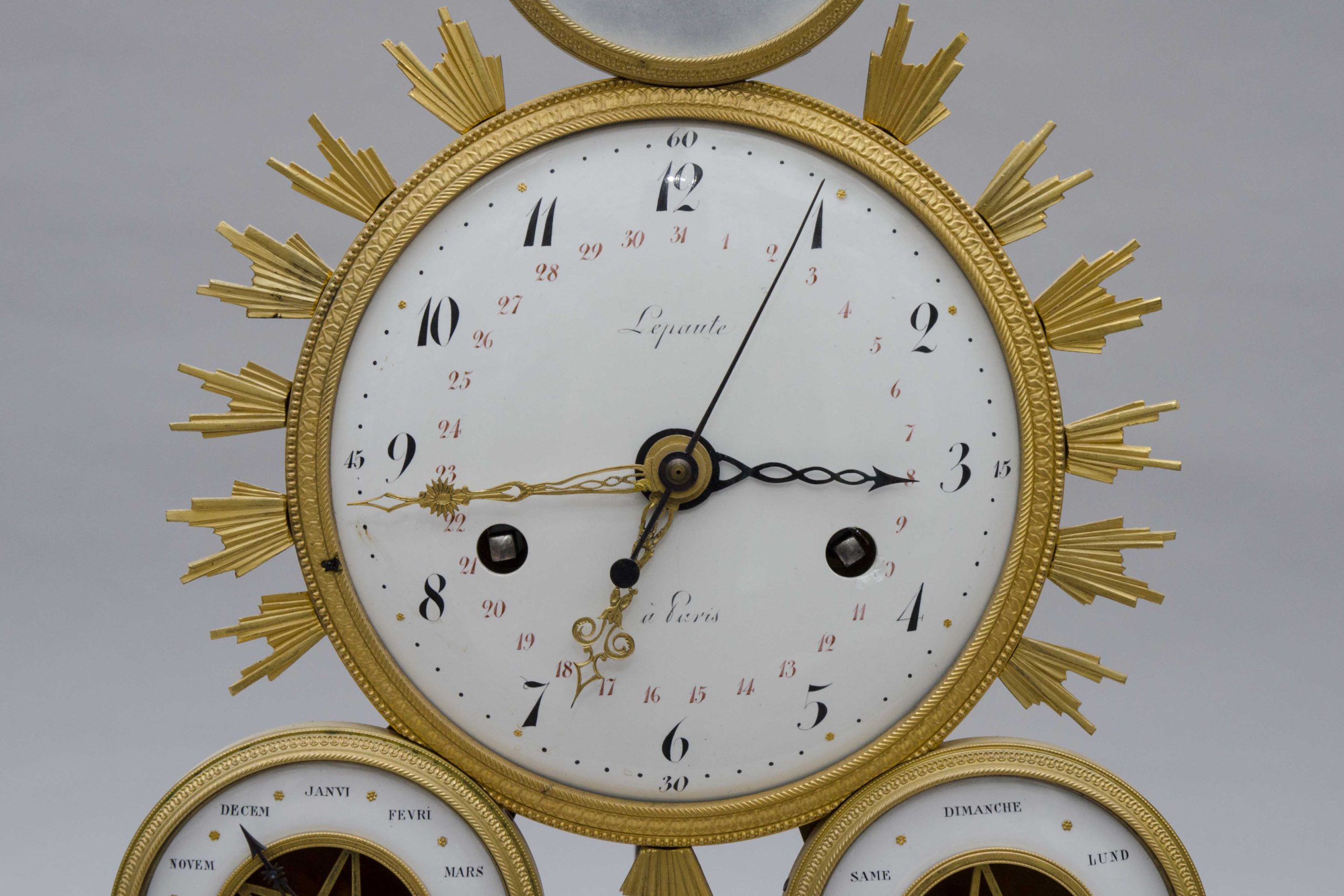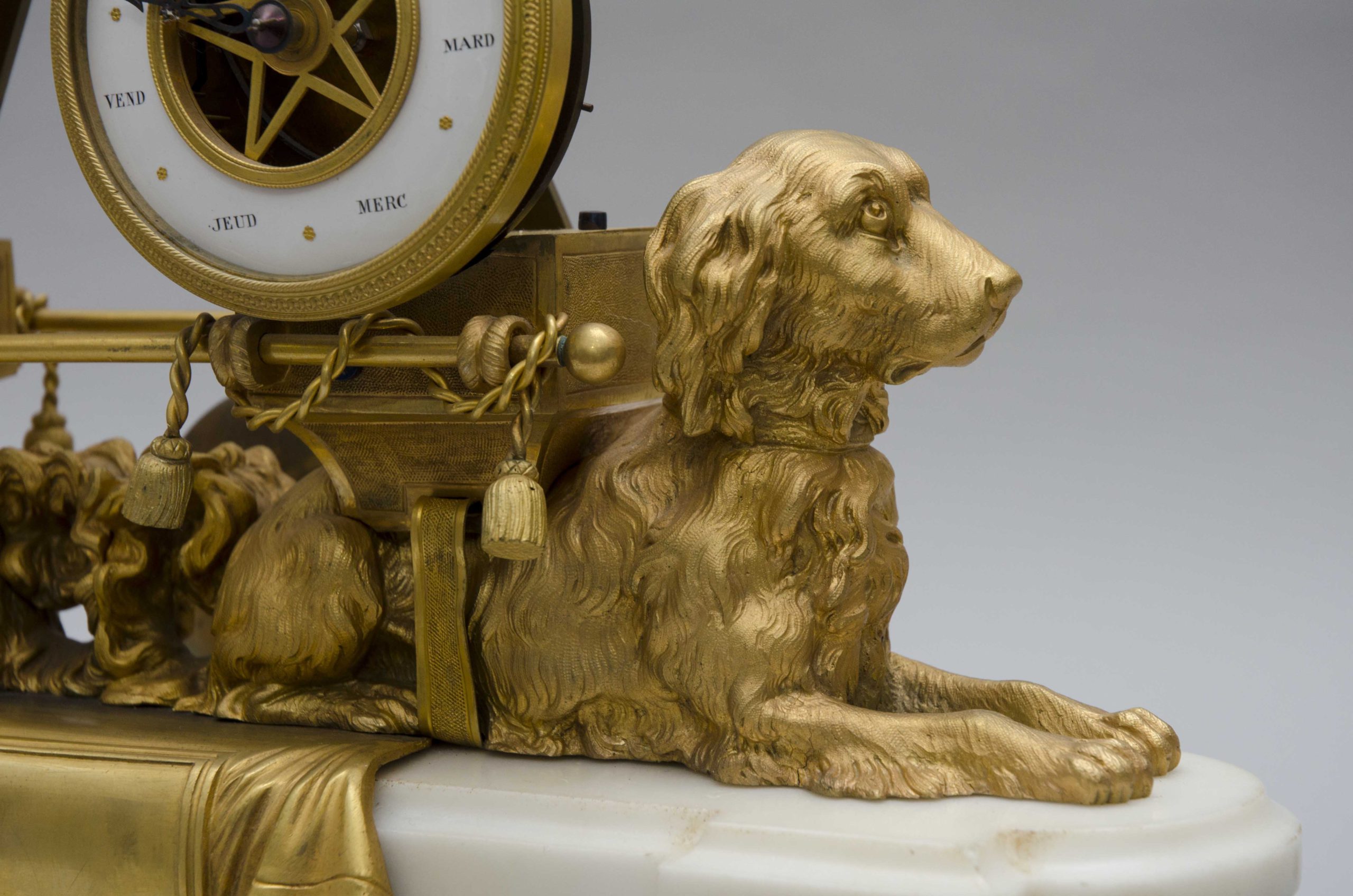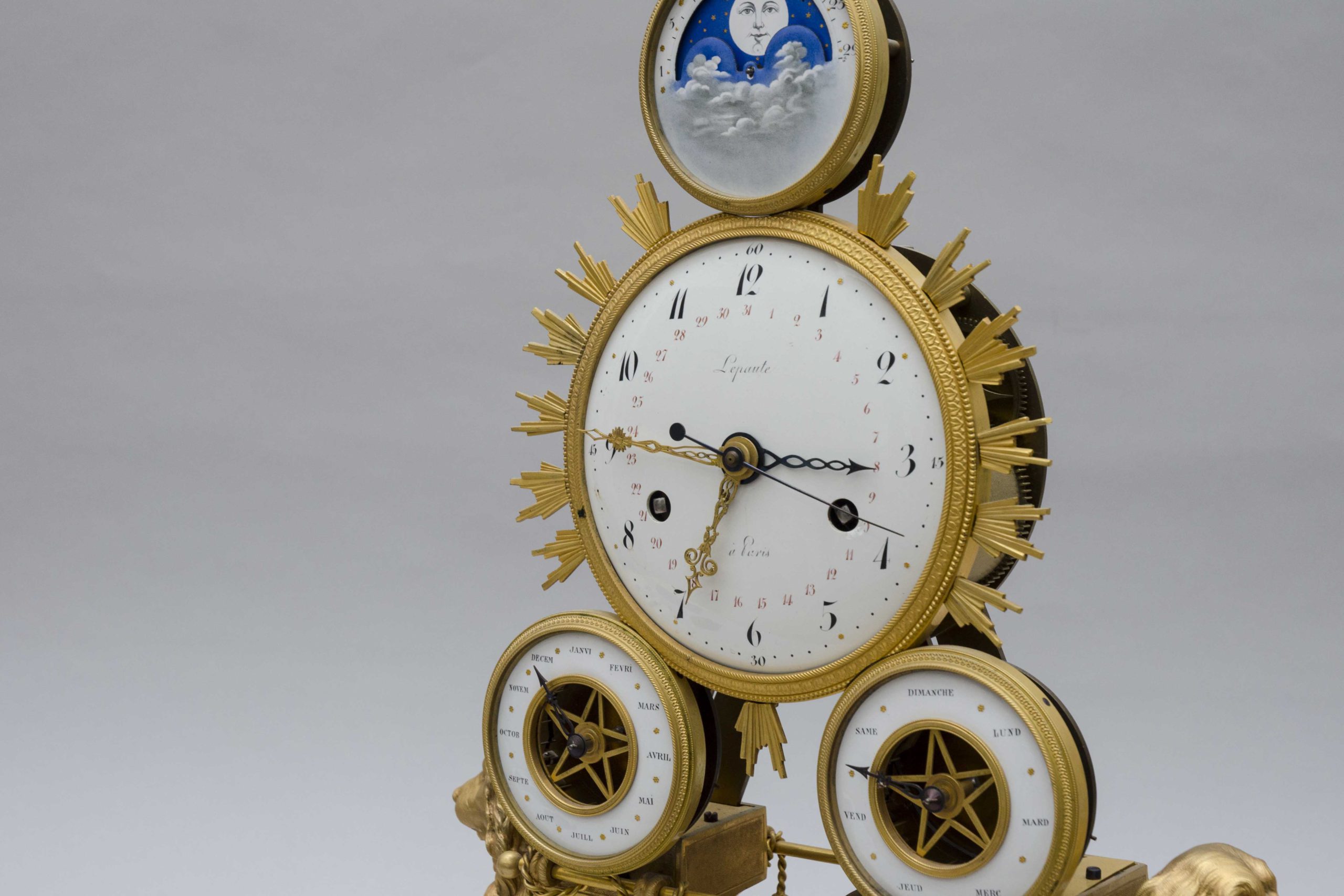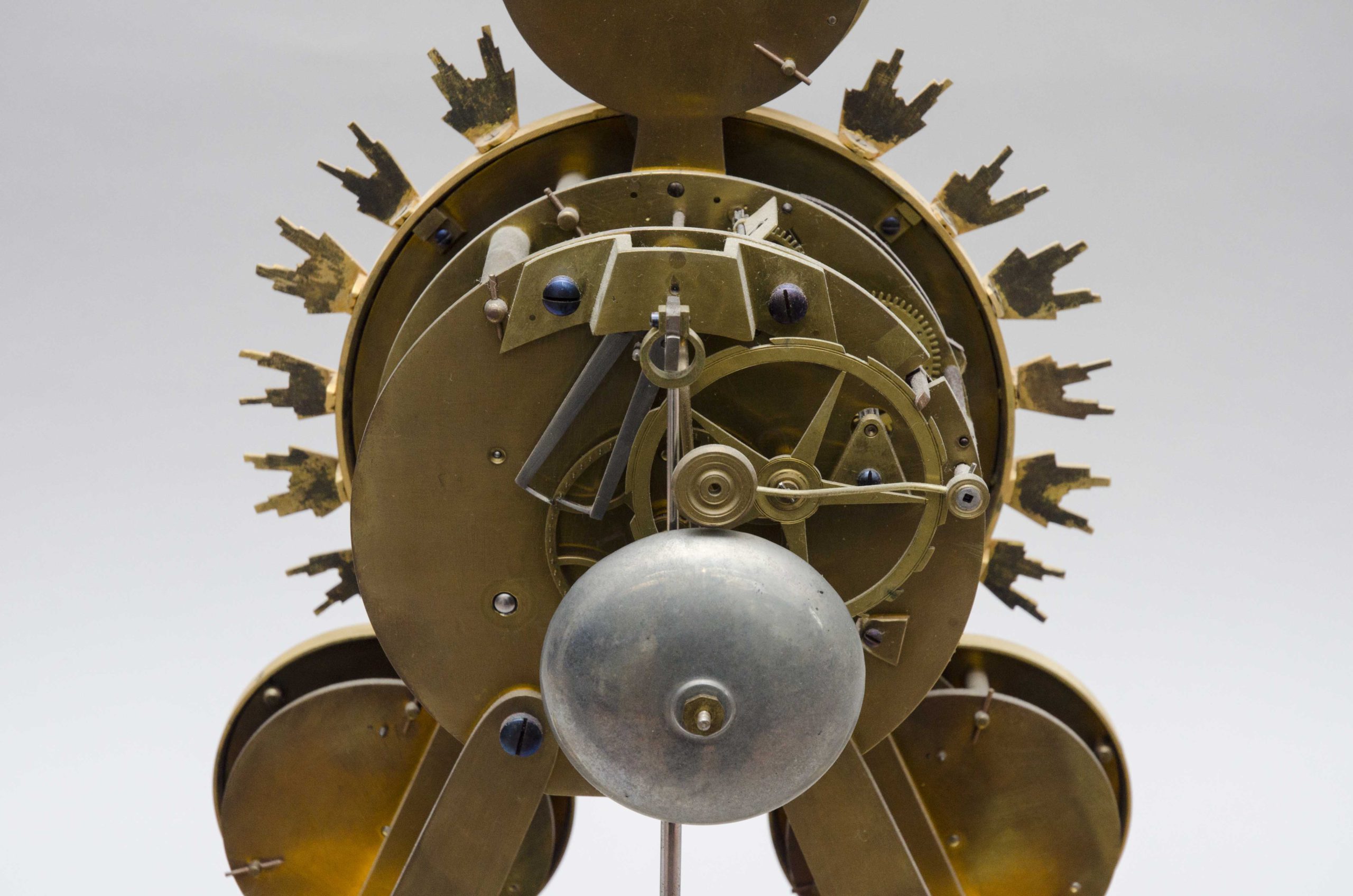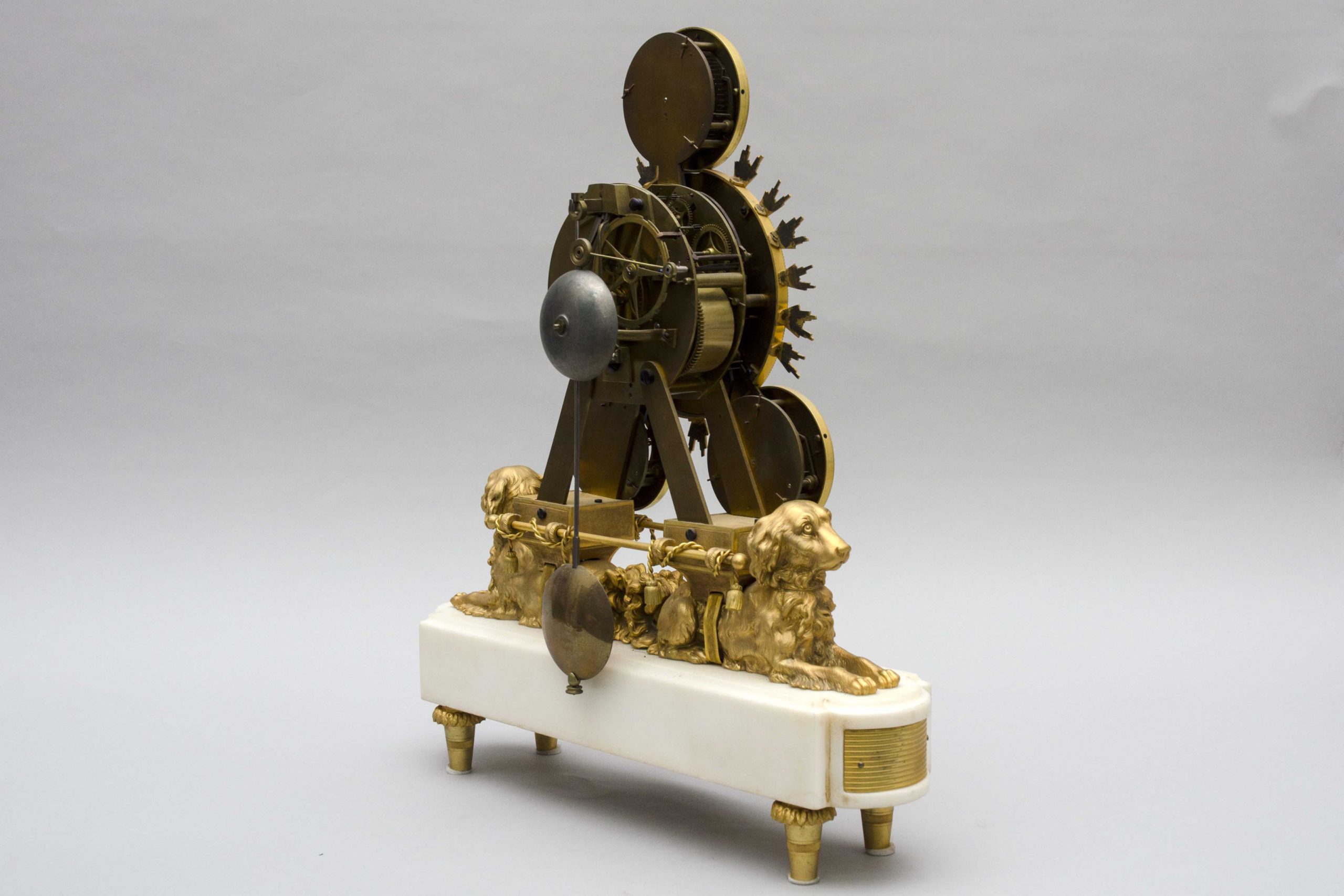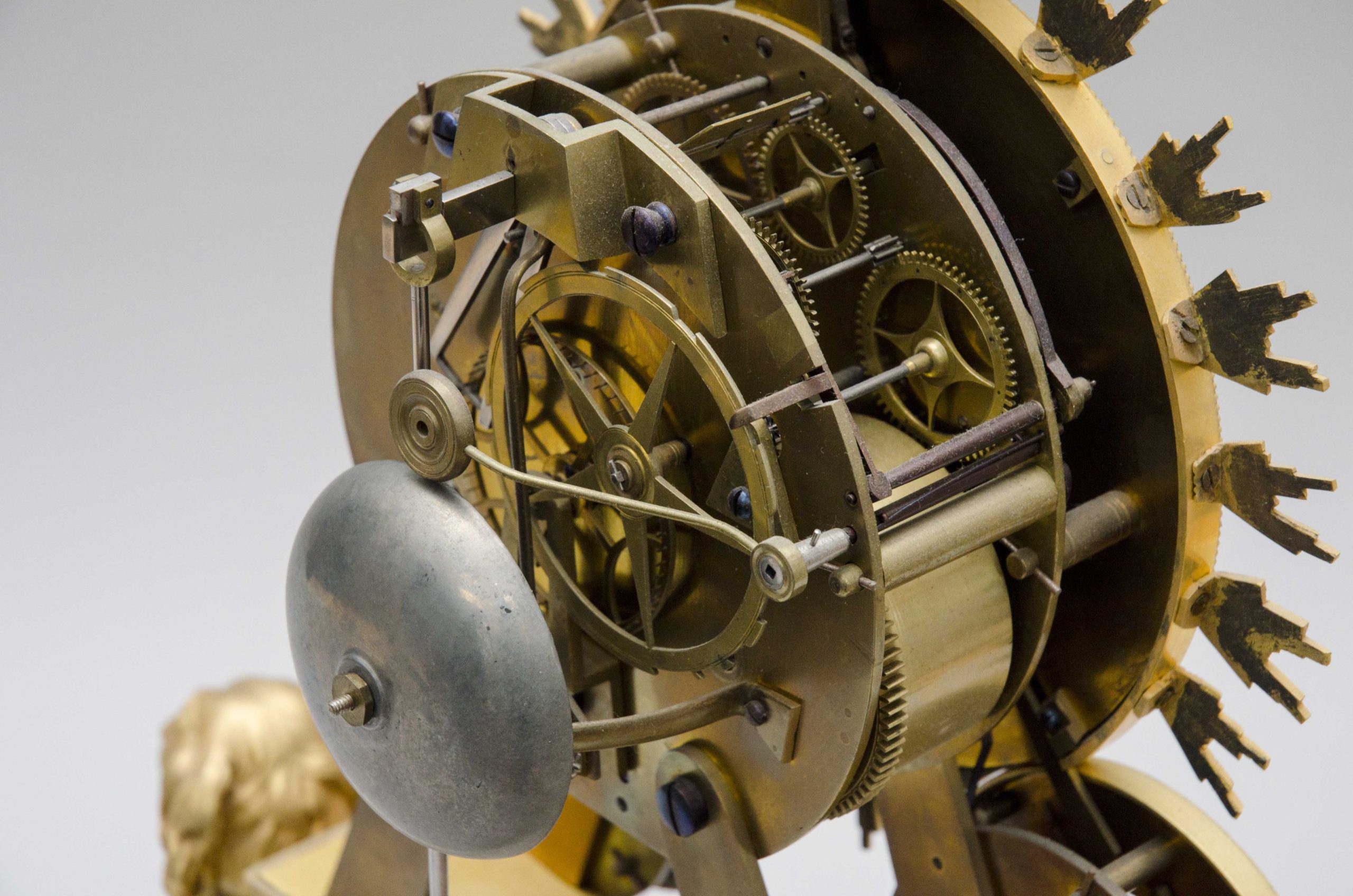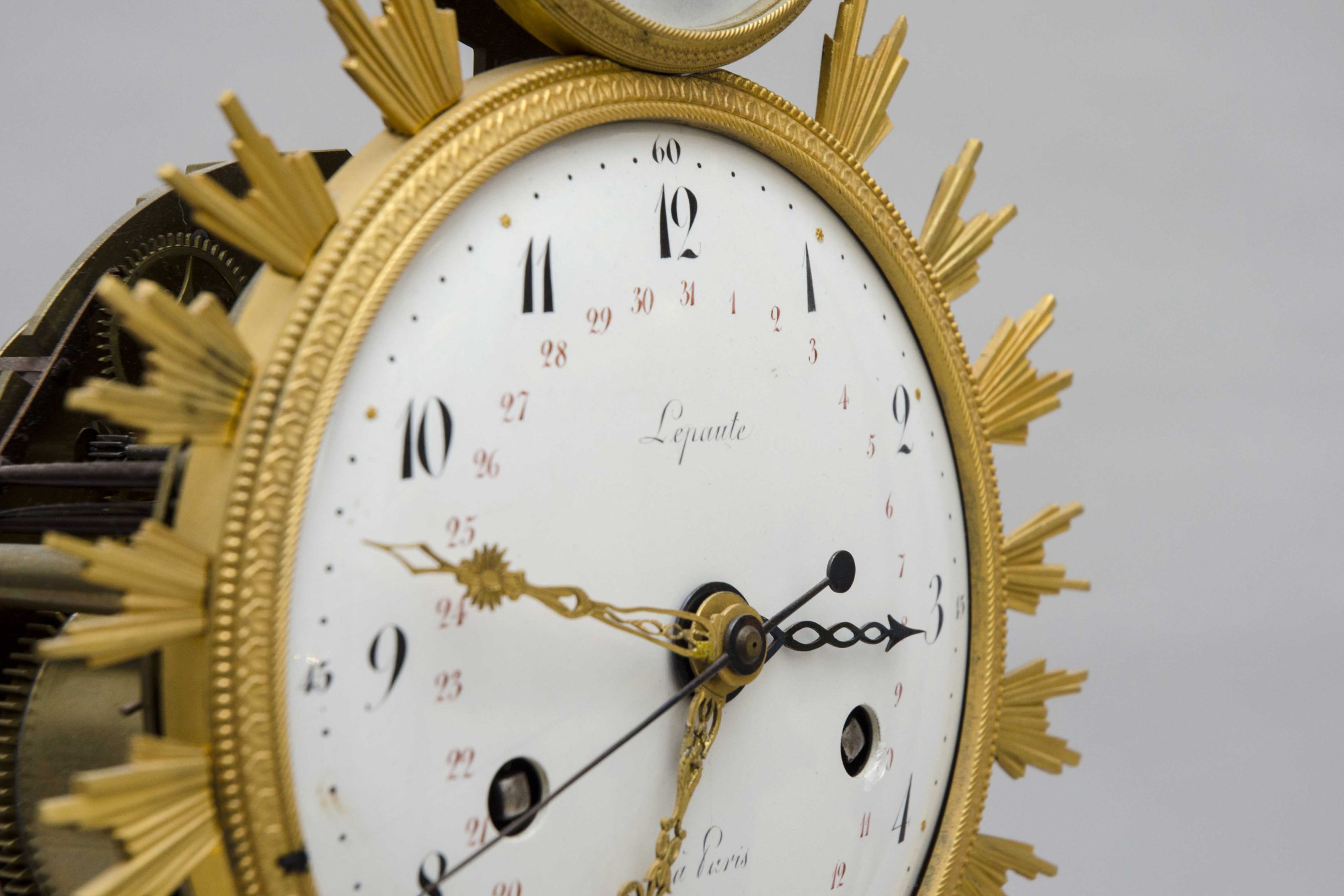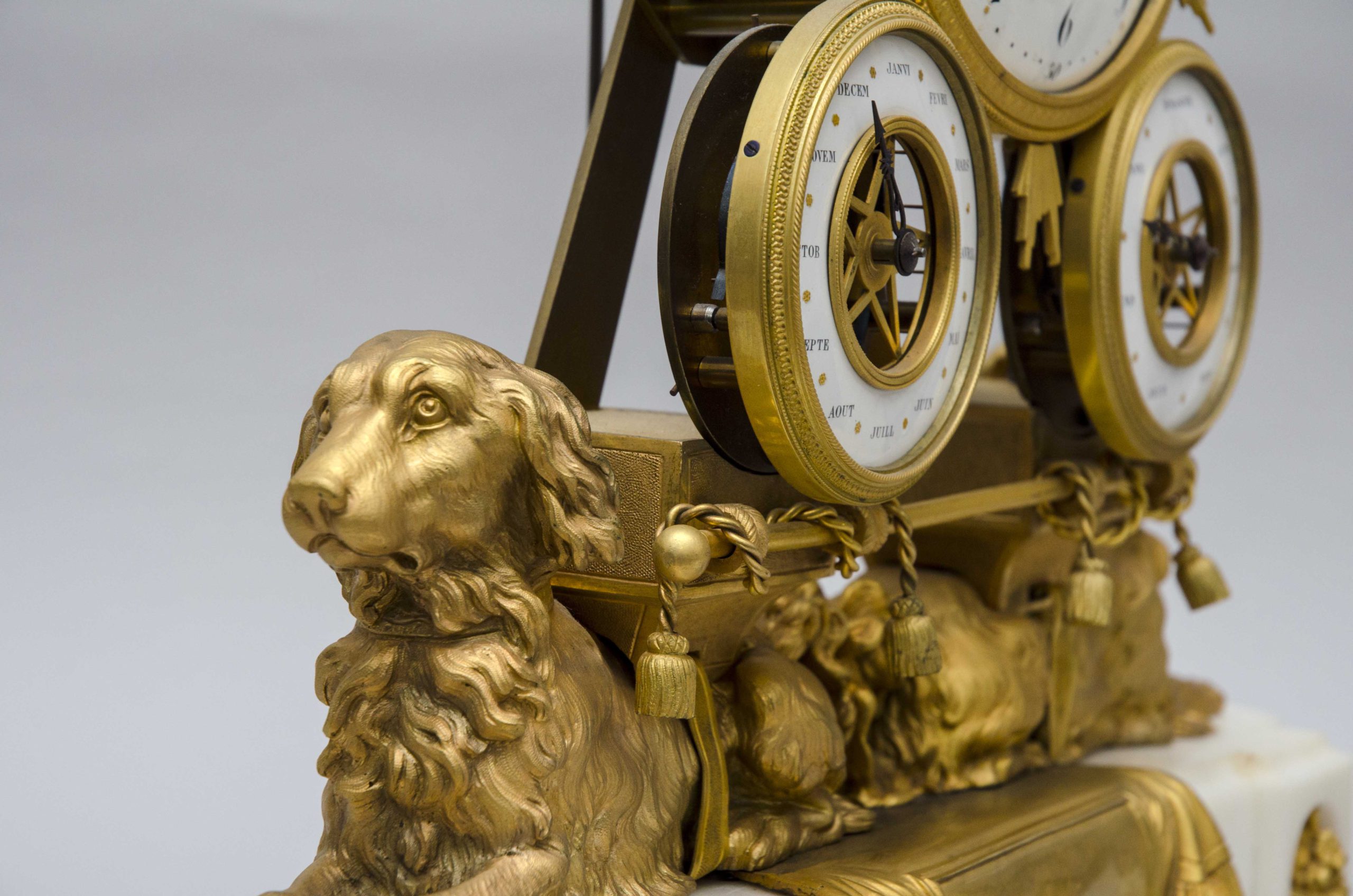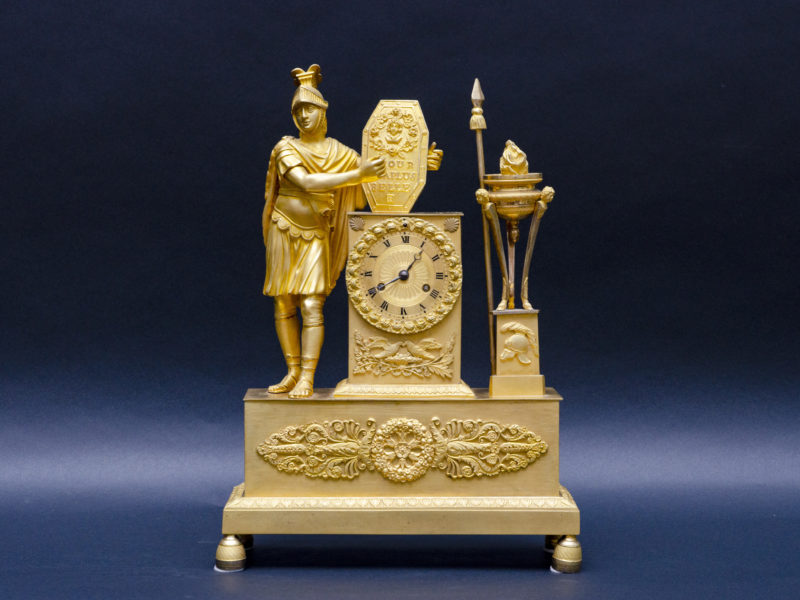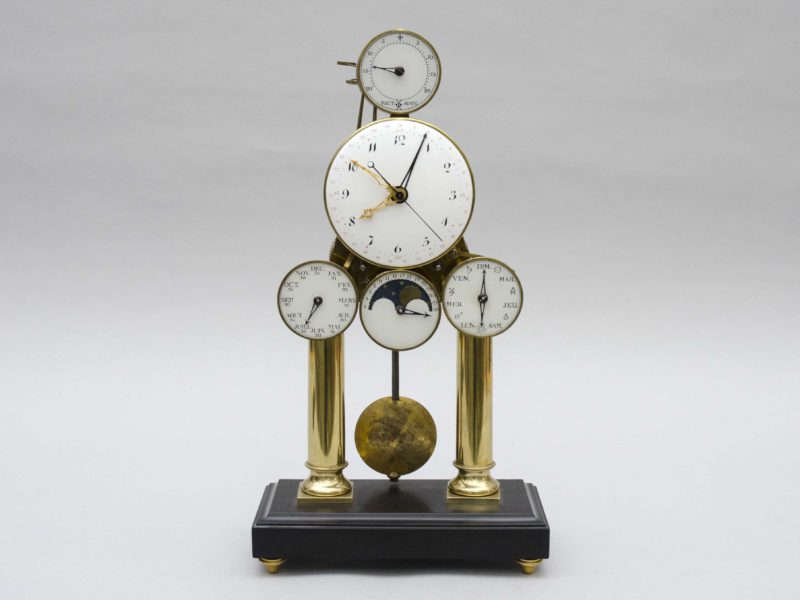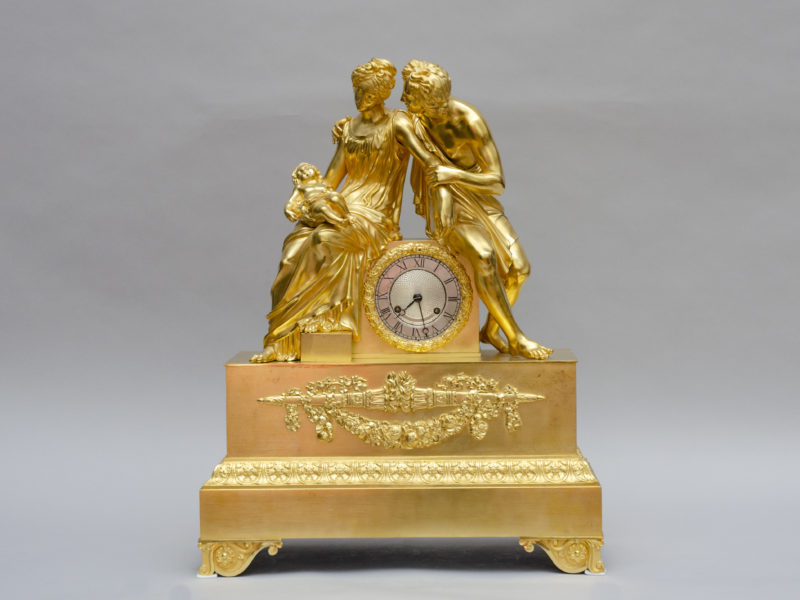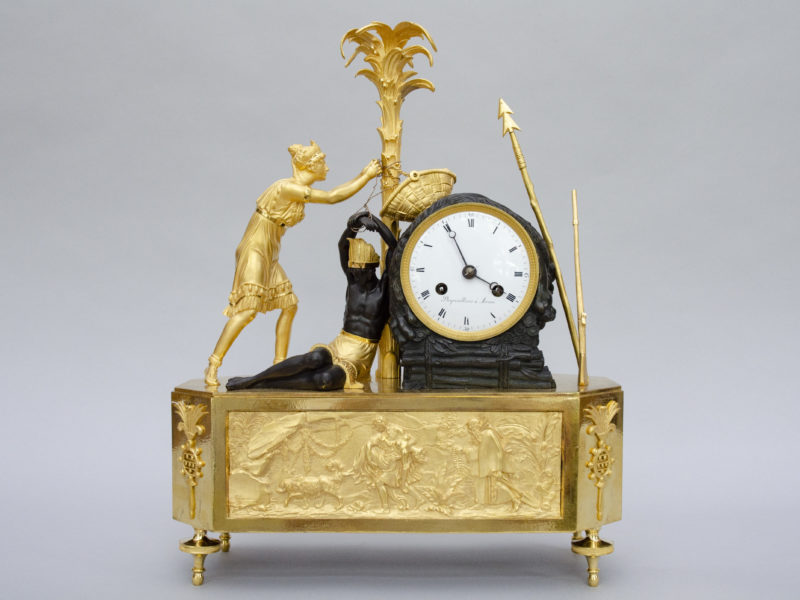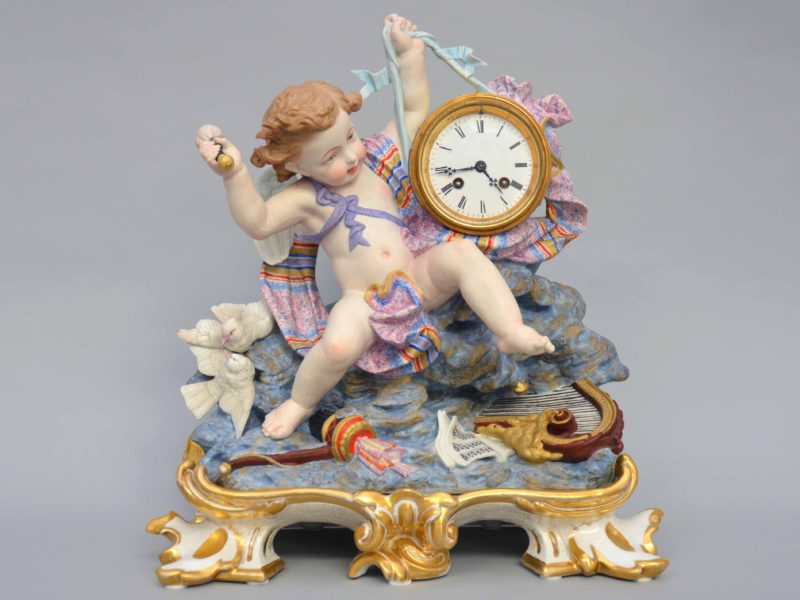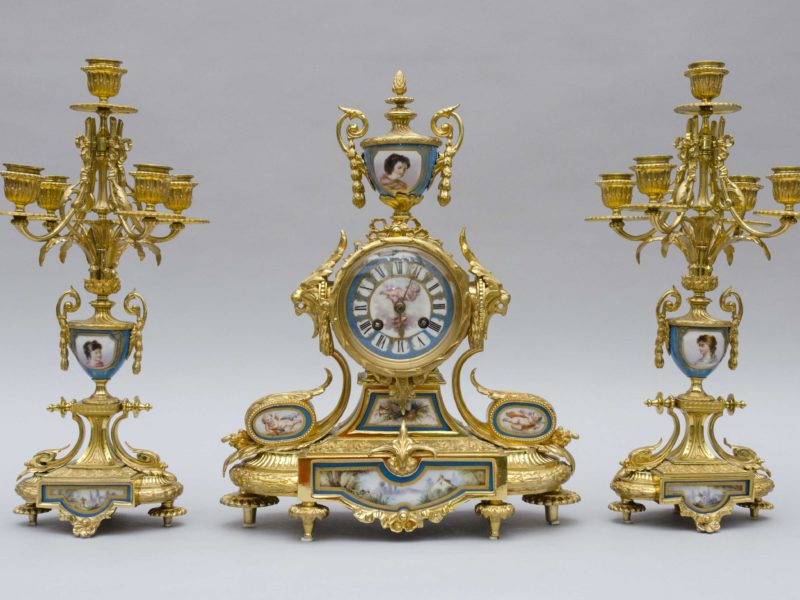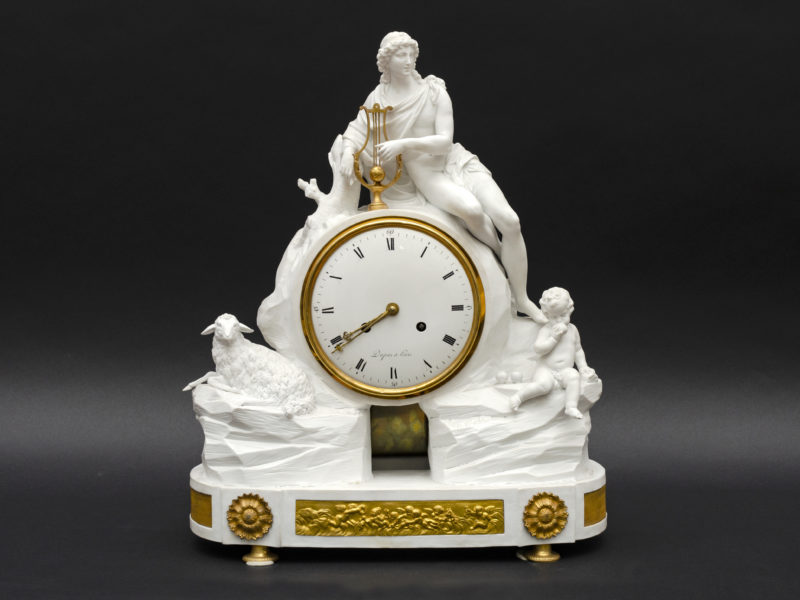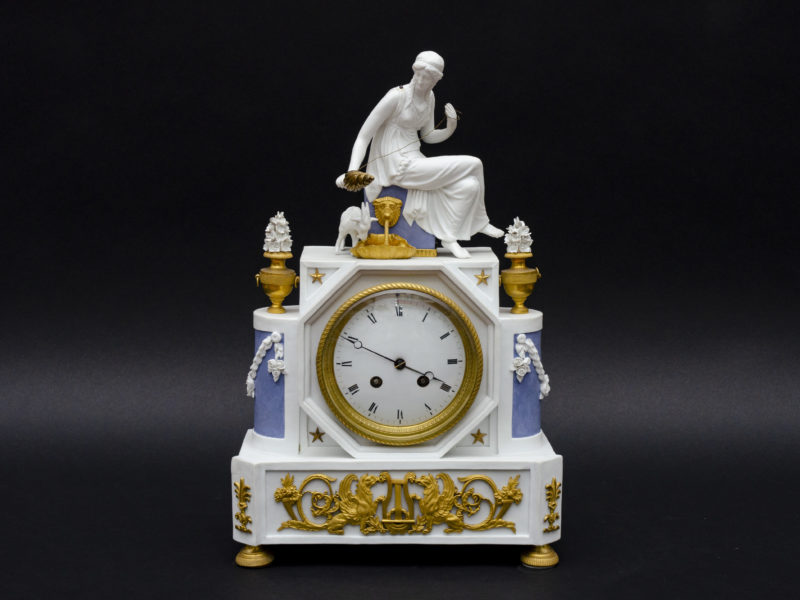Skeleton clock, Lepaute à Paris
Price on request
In stock
Contact usa skeleton pendulum clock with four dials, white marble and magnificent golden bronzes. The enameled main dial is surrounded by sun rays in gilded bronze, it has black Arabic numerals for the hours, quarter hours and red numbers indicating the days of the month. Several finely chiseled needles. The other three dials form a triangle with a white enameled dials at the base, one showing the months of the year and the other one the days of the week. Both have a bronze star in the center. The upper dial shows the moon phases. The set is supported by a couple of spaniels lying on a white marble base, itself decorated with drapery and flower baskets. Main dial signed for the clockmaker Lepaute in Paris. Very good state of conservation for this rare object.
Size: H 50 cm x W 44 cm
Louis XVI period, circa 1780-1790, signed Lepaute in Paris
Lit: The signature “Lepaute Horloger du Roi” in Paris stands for the collaboration between two brothers, Jean-André Lepaute (1720-1789) and Jean-Baptiste Lepaute (1727-1802), both named King’s clockmakers and who enjoyed an extraordinary career. Jean-André, born at Thonne-la-Long in Lorraine, came to Paris as a young man and was joined by his brother in 1747. Their company, created in 1750, was formally founded in 1758. Received master by their corporation in 1759, Jean-André was first housed at the Palais du Luxembourg and then, in 1756, at the Galeries du Louvre. Jean-André Lepaute wrote a Treaty of Watchmaking, published in Paris in 1755. A small volume, Description of several watchmaking works appeared in 1764. In 1748 he married the mathematician and the astronomer Nicole-Reine Etable de la Brière, who predicted, among other things, the return of Comet Halley. Jean-Baptiste Lepaute, received master in December 1776, was known for the time equation clock he built for the Paris City Hall (1780, destroyed by the fire of 1871) and that of the “Hotel des invalids”. They worked, in particular, in France, for French crown (mobilier national) and the greatest amateurs of the time, abroad, for Prince Charles of Lorraine and Queen Louise-Ulrique of Sweden. Jean-Baptiste took over the management of the workshop when his brother Jean-André retired in 1775. They were already working with two of their nephews, Pierre Henri and Pierre-Basile, who will eventually take over. Pierre-Basile, aka Sully-Lepaute (1750-1843), buys the family company in 1789. Towards the end of the 18th century, he founded with his nephew, Jean-Joseph Lepaute, a new, successful company which lasted until 1811.
In stock
Contact us